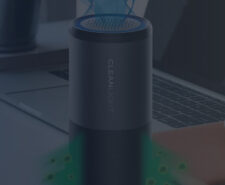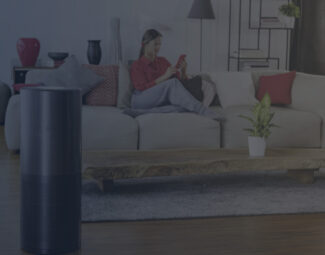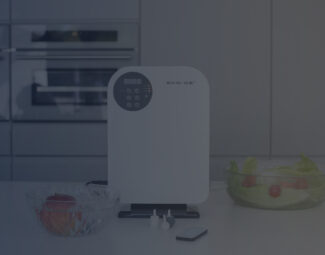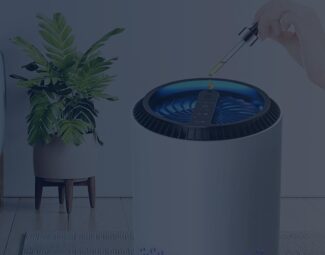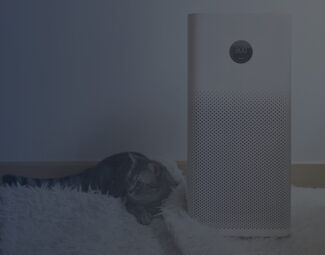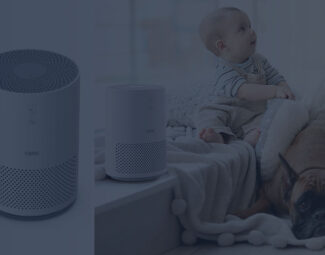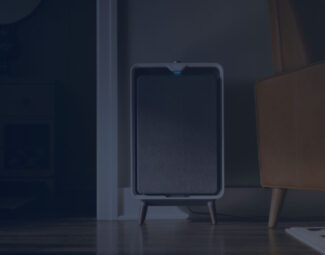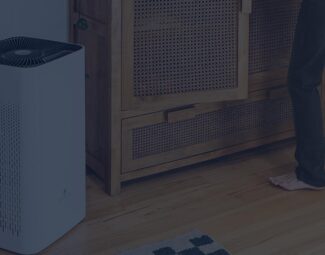W hile your first thought when you hear about air purifiers is HEPA filtration, the truth is that there are multiple technologies the systems can use in their operation, and one of the options that are sought-after for its air sanitization properties is UV light technology. Since its inception, UV light has been employed for the disinfection of water, air, and surfaces.
Its role in an air filtering system is to safely kill mold, mildew, germs, bacteria, and microorganisms it generally encounters, leaving behind safe air for you to inhale. Continue to read and learn more about UV light systems and their operating properties to decide whether or not this is a viable solution for you to combat poor indoor air quality.
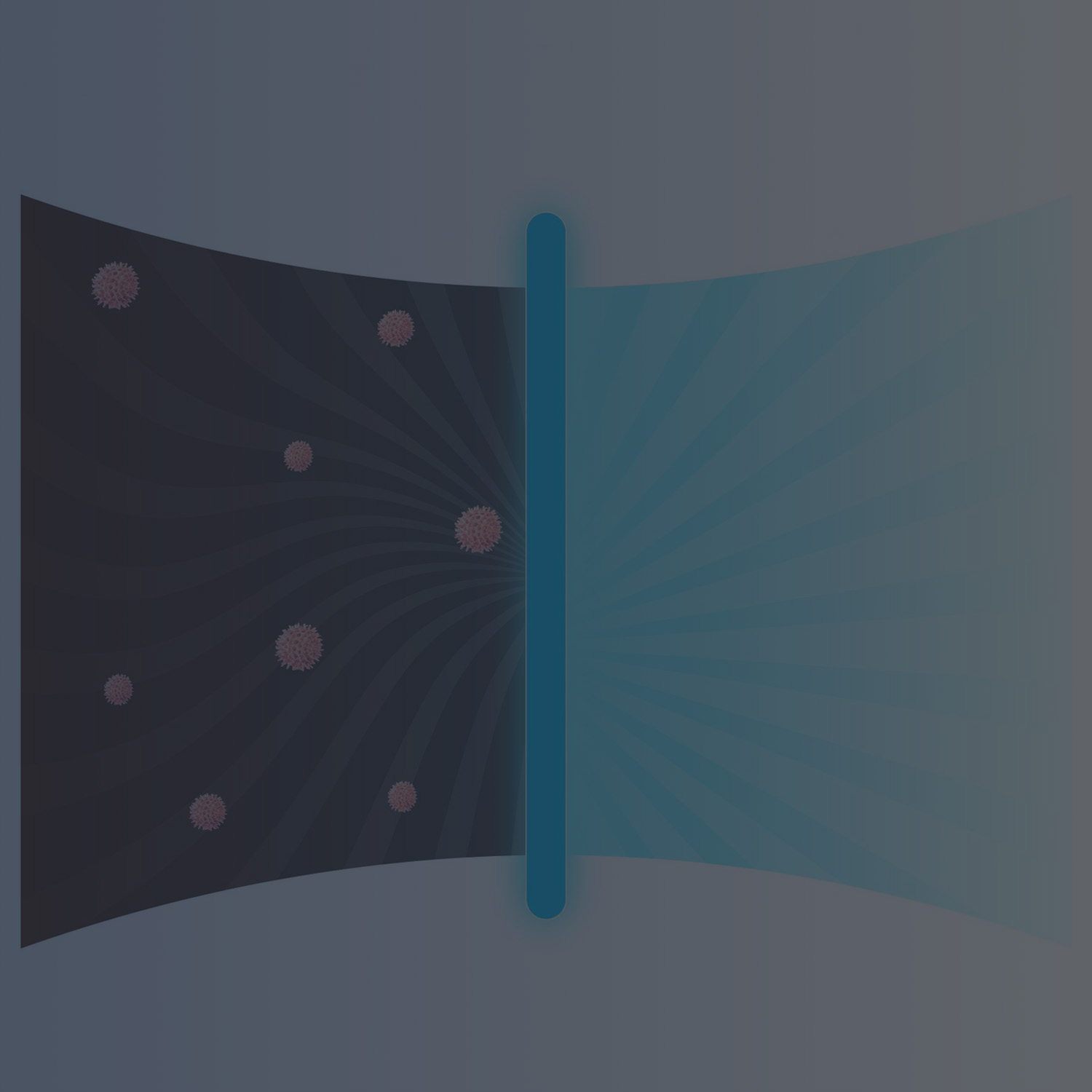
Exemplification of How UV Light Removes Air Pollutants
The ABCs of UV Air Filtering Technology
They use short-wave UV light, which is known as UV-C light, to destroy the DNA composition of microorganisms encountered in the air, inactivating them so that they won’t pose a threat to your health. Made to reduce indoor air pollution as all air purification systems. What sets them apart, however, is the superior germicidal property that makes them different and more effective than systems that contain UV technology but don’t use it to its fullest for air pollutant elimination.
Note: UV air filtering systems are rarely standalone as they are not as efficient at trapping airborne particles as they are when utilized in a HEPA filtration system. This is why you are most likely to find systems that feature both filtering technologies and why it is recommended to opt for a system of the sort if you seek to cleanse the air of allergens and microorganisms polluting it.
While we cannot see this sequence of the light spectrum, we can feel it. But this happens only when the sun blisters. It is comprised of 3 distinct subdivisions, each with its properties and characteristics:
- UV-A: 315 to 400 nm, vibrating at a slow pace. It covers approximately 95% of the sun’s radiation and is employed in tanning booths and disinfection tools.
- UV-B: 280 to 315 nm, vibrating at a slightly faster pace than the previous category. About 95% of it is absorbed by the Earth’s atmosphere and it is commonly used in plant growth, altering plant hormones.
- UV-C: 100 to 280 nm, vibrating at the fastest pace. It is completely absorbed by the ozone layer. It is generally utilized in air cleaners as it flaunts the highest efficiency when it comes to killing microorganisms. Plug-in air purifiers generally rely on UV light in their operation as well, their efficiency toward cleaning the air in a smaller-size space being amped by the existence of UV technology that tackles microbes.
Air Pollution Reduction Performance of UV Light Systems
- Microorganism removal: It is the most potent process for deactivating microorganisms. Indeed, elevated levels of UV irradiation are requisite to alter the DNA of certain mold and bacteria spores, but it’s not difficult to encounter a system that provides the needed performance prowess and exposure time to solve air quality and sanitize the air as needed for your well-being.
- Allergen removal: While effective up to a point, UV purification is not fully reliable when it comes to the removal of smoke, mold, pet dander, and chemical fumes from the air, common allergy and asthma attack triggering particles. Moreover, some specks are invulnerable to UV radiation, a system that solely relies on this technology proving worthless in their reduction.
- VOC removal: UV light is completely inefficient against volatile organic compounds. Thus, if you tested the air for VOC levels and found that pollution levels are high, better go for a HEPA air purifying system that doesn’t use UV technology or provides you the option to turn the UV function on/off as you see fit. There is the risk to alter VOCs because of UV radiation exposure, which will lead to their transformation into more hazardous compounds, so beware that air quality testing should be performed beforehand to not create a bad situation worse.
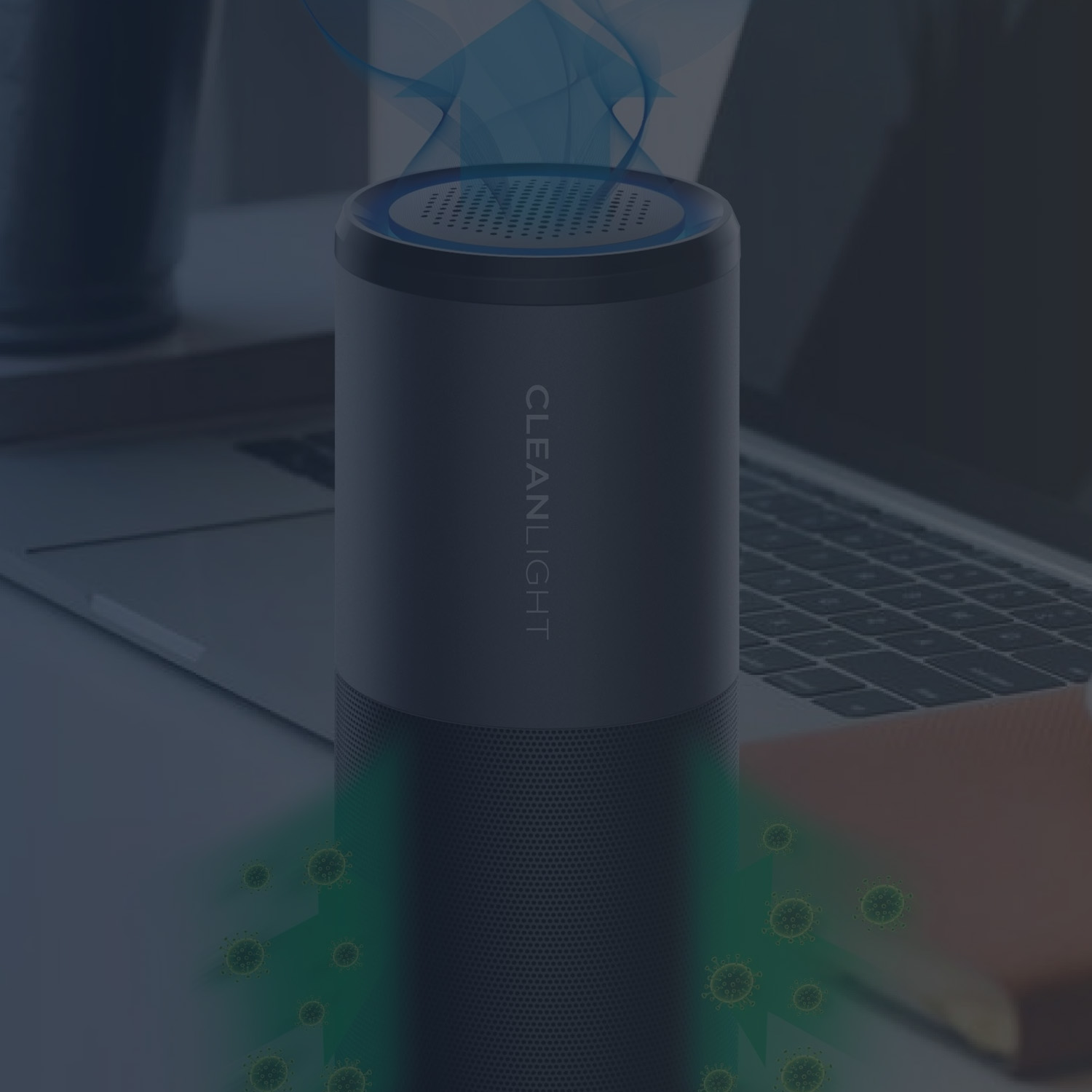
UV Air Purifier on Office Desk
Safe Use Considerations
Repercussions of UV light overexposure:
- Overexposure to UV-A: Rapid aging of the skin and appearance of wrinkles.
- Overexposure to UV-B: Increased chances of developing skin cancer and alters DNA structures.
- Overexposure to UV-C: Skin cancer, eye damage, permanent DNA structure altering.
Although UV technology has already been proven to be safe, some reports suggest dangers if the UV lamp is not coated, more precisely UV-C radiation can be transferred out through oxygen in the air. Afterward, through the process of photolysis, ozone is created, which in high amounts poses a danger to your health. The combination of decomposed oxygen molecules and unaffected ones leads to this development.
As aforementioned, when present in small amounts, ozone does not pose a threat to human health, so beware that ozone generators are safe for use toward air cleaning as the systems are intended to produce low levels and not interfere with your well-being.
Lamp exposure leads to eye damage and sunburn, so avoid looking straight at it and sitting around it in case the protective cover is not on. But these aren’t issues to worry your mind about as the UV lamp is always behind a closed cover in air filtration systems. Just make sure that the cover sits tightly in its position, and you won’t ever suffer repercussions.
Final Words
The advancements presented by UV technology in the domain of air purification systems are undeniable, presenting what is for sure the most efficient manner to obliterate microbes from the air we inhale to make a safer habitat indoors. Typically safe as their construction is thought up so that the creation of ozone won’t be an issue, the systems are the preferred choice of many customers in rooms where sanitized air is imperious, like the baby’s room or bedroom.
Now that you know that UV air purification systems are harmless and have gained the needed insight regarding how they function, draw a comparison to other technologies used in air filter systems like HEPA filtration and activated carbon filtration, and make an informed choice regarding the product that best suits your needs.

